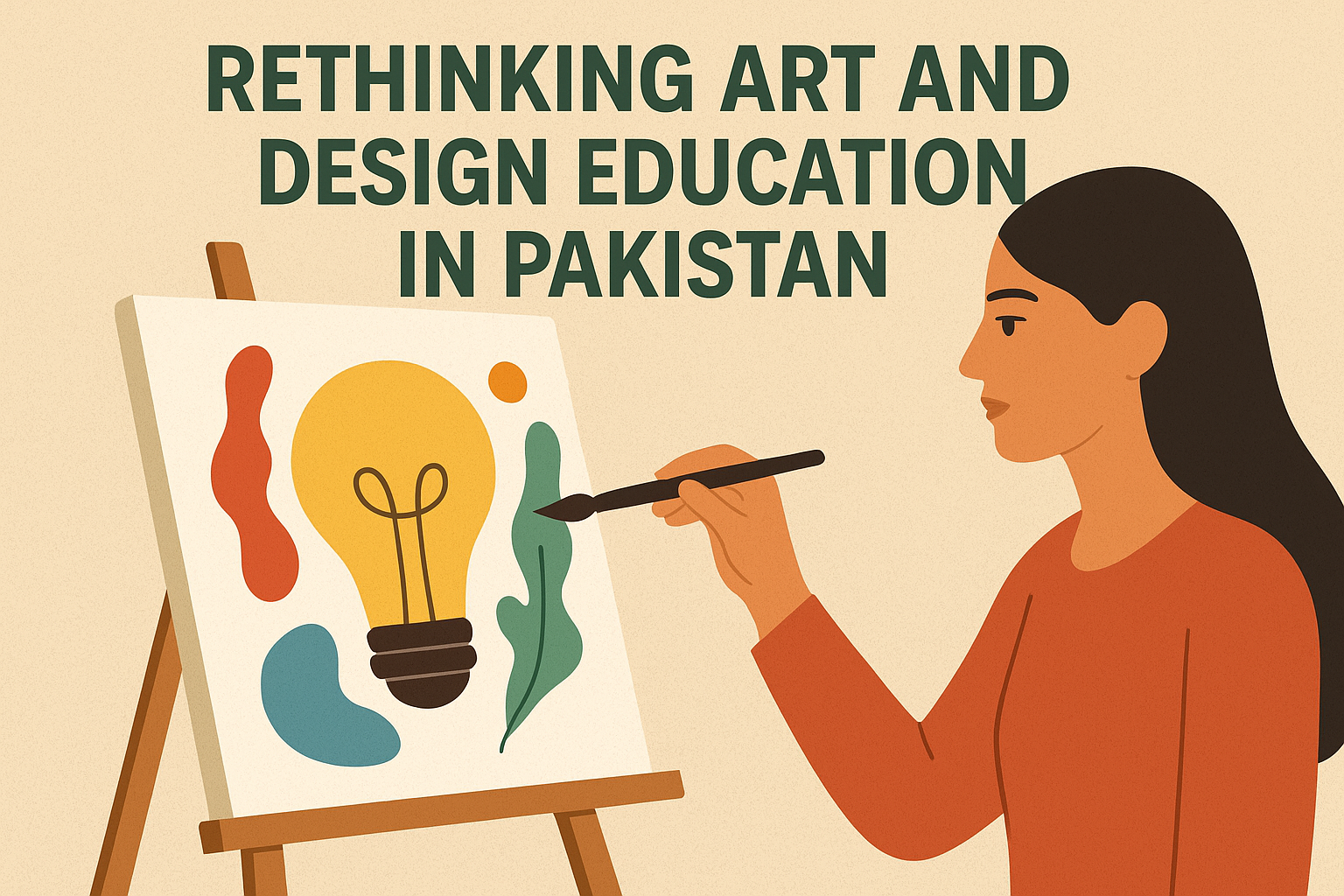
To whom it may concern
I am writing to share an ongoing project titled “Decolonizing Art & Design Education in Pakistan: Linking Research, Practice & Policy”. The project recognises the need to reassess strategies for a more comprehensive and result-oriented approach in art and design education. It proposes contextually engaged learning and systems of knowledge production as a promising approach towards a more stable society eager to create an impact globally.Monsoon safety gear
The history and politics of the education system in colonial India reveal that it undermined the ancient legacy of Indian art and India’s status as a hub of higher education since the Axial Age. The universities of Taxila (5 BC) and Nalanda (5 AD) justify this claim. Indian metaphysicians and logicians made significant contributions preserved through Jain, Buddhist and Hindu traditions. During the Medieval era, India got introduced to Islamic conventions of learning focusing on spiritual elevation and intellectual heritage. Arabs and Turks who brought Islam to the subcontinent were acquainted with the sophisticated Persian culture and its achievements in educational leadership of the medieval world. It is believed that for several centuries, a series of brilliant philosophers and scientists made Baghdad the intellectual centre of the medieval world. The translation of Greek texts into Arabic by Muslim scholars was a significant intellectual feat that laid the groundwork for the European Renaissance. Hence, in medieval India, madrassahs and khanqahs provided an ethical and practical manifestation of a just and useful life as the main aim of all learning pursuits.
In colonial India, education was not a priority. British officers, belittling Indian literature and dialects as devoid of scientific or literary value, advocated for English as the sole language of instruction, declaring Indians as champions of errors. George Birdwood, an Anglo-Indian official, while chairing the annual meeting of The Royal College of Arts in 1910, claimed that painting and sculpture as ‘fine arts’ did not exist in India. With this mindset, art and design education was introduced “…to meet rapidly expanding industrial ambitions” of the colonials. Basically, the British colonial education system in India was designed to civilise the barbarous Indians and make them loyal subjects of the British crown.
Pakistan’s art education has been shaped by a lingering colonial legacy, leading to the marginalisation of arts in mainstream education and a dominance of Western trends. Policymakers, often driven by political agendas, have historically governed art practice and education through a religious lens. Meanwhile, renowned art educators, despite their artistic expertise, have overlooked developing culturally relevant pedagogies for indigenous students.Monsoon safety gear
The current geopolitics and globalisation intensify the need to integrate teaching, learning, research, scholarship and communal development as a connected activity. This implies complex interactions between various streams of knowledge — physical, metaphysical, spiritual, philosophical and applied. One system, one strategy and one approach is no longer a solution. There can be many appropriate answers to a given question on art and design education; straitjacketing is definitely not one. We propose a new approach that challenges the Western hegemony over Eastern pedagogies and recognises cross-cultural influences as a reality. Colonisation of India is a reality that cannot be reversed, but its after-effects can be addressed and mitigated. We need to weave together factors such as religion, politics, economy and the natural world that affect the production of art and cultural industries.
To achieve this, we need to rethink Art for 21st-century Pakistan: Is it still a luxury of the elite or a foreign agenda, a concern of the leftists, pseudo-intellectuals or eccentrics or can it be adopted as a way of life? And we need to develop pedagogies that make art — a medium of investigation promoting critical thinking with its core deeply connected with reality and imagination both and its scope centred on problem-solving along with enhancing everyday experience — relevant to our society and our times.Monsoon safety gear.
Sincerely Yours,
Bano
August, 2025
Source:https://tribune.com.pk/story/2562452/rethinking-art-and-design-education-in-pakistan


